Oceans Under Seige with Plastic
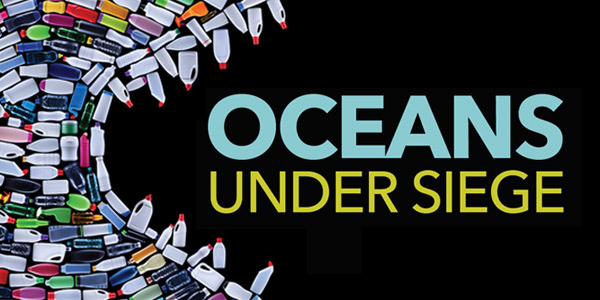
Plastic Debris Wreaks Havoc in the Pacific Ocean
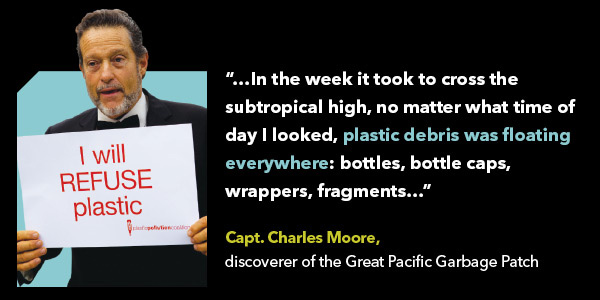
(Updated August 2021)
No matter your background, the environmentalist in all of us cringes when reading this sentiment from Captain Moore. Say nothing of our inherent instinct to get involved and help in some way. However, in order to fully understand what the Captain described, and to put it into context with our world today, we need to step back a few paces.
Ocean Gyres to Trash Vortexes
As he crossed the Pacific Ocean, what Moore discovered in 1997 (and shortly thereafter was named the Great Pacific Garbage Patch), exists within the confines of the North Pacific subtropical gyre. There are five major ocean gyres around the globe that have existed and evolved with the shifting of the tectonic plates since the beginning of time. Formed by global wind patterns and the forces created by the Earth’s rotation, ocean gyres have a tendency to collect debris – which up until modern times has consisted of natural material.
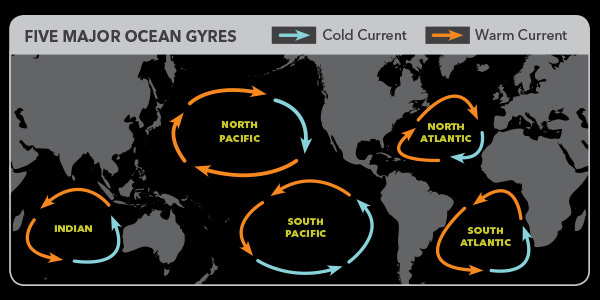
The North Pacific Ocean Gyre is massive, made up of four currents that move in a clockwise direction around an area of 20 million square kilometers (7.7 million square miles).
Similar in nature to the effects of a whirlpool, ocean gyres draw floating or suspended material into the area. Over time, that material breaks down and is naturally constituted into ocean waters, in a continuous cycle of natural decomposition. When we started producing man-made materials around a century ago, like plastic, they also began to enter the ecosystem.
Naturally occurring debris is virtually harmless, as it eventually breaks down and continues the decomposition and enrichment cycle. But man-made debris isn’t so harmless. Some of these materials can take hundreds of years to decompose, polluting our oceans and taking a toll on the Earth and those that inhabit it.
Plastic
Today, ocean gyres or vortexes collect storm debris, the same way they have for years. But the majority of this material is plastic. Man-made materials were essentially born out of the industrial revolution, a period when terrific advancements were made in manufacturing and production, including those in chemical processes. Out of that upsurge in technology, plastic was invented.
According to some scientists, all the plastic that has ever been produced still exists today. It may be buried in a landfill, recycled and reconstituted into a park bench, or has sunk to the bottom of the ocean, but it’s still on Earth. Plastic can take hundreds of years to decompose. In the meantime, it doesn’t break down – it simply breaks apart into smaller and smaller pieces. It’s estimated that 705,000 tons of plastic makes up the Great Pacific Garbage Patch.
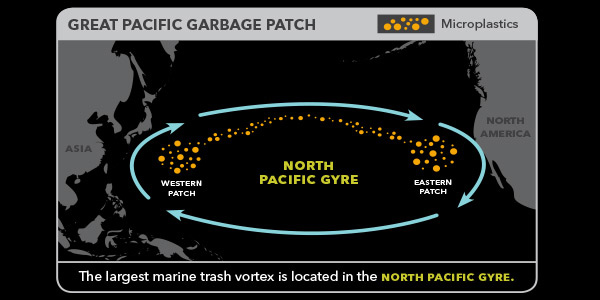
When we ponder for a moment what a “garbage patch” in the middle of the ocean might look like, many of us can imagine a suspended island of trash floating on the water. And certainly, much of the garbage is in fact larger pieces of storm debris, such as fishing nets, buoys, or marina docks and broken up boats. But in reality, ocean garbage patches are predominantly made up of minuscule bits of plastic, called microplastics, in suspension up and down the water column.
These micro-plastics are produced from the breakdown of larger pieces of plastic and are also found in some personal care products, such as toothpaste and face wash. Much of the garbage patch debris isn’t visible to the naked eye, and large percentages of it are deep below the surface of the water.
Fish Food
This is where the problem becomes exponentially more complicated, when large chunks of plastic become increasingly smaller pieces over time, into fragments of debris. The smaller the fragments get, whether they’re the size of a pea or a minuscule speck of dust, the more it begins to resemble food to fish, sea turtles, and birds.
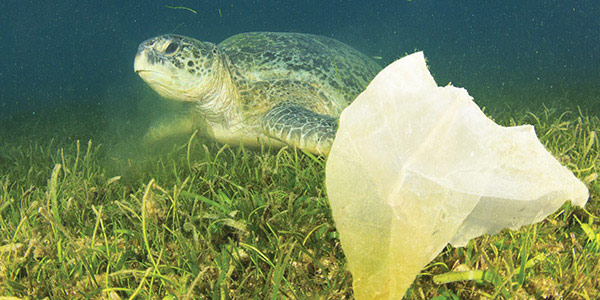
According to the National Oceanic and Atmospheric Administration (NOAA), scientists estimate that 90% of all seabirds have ingested plastic, and plastic can be detected in 50% of sea turtles. Not only are aquatic organisms consuming the plastic, but they are also getting wrapped and tangled up in it too. Sea lions have been found with shipping material wrapped around their neck, while turtles have been caught in six-pack rings, shells bound by the plastic. NOAA also suggests that by 2050, there may be more plastic in the oceans than fish.
Where Do We Go From Here?
National Geographic estimates that only 20% of the debris in the Great Pacific Garbage Patch comes from boaters, offshore oil rigs, and large cargo ships that dump or lose debris directly into the water. The remaining 80% comes from land-based activities in North America and Asia, so any solution needs to address both ocean cleanup and the source of plastic as well. (Visit the Gyre Garbage Patch Infographic).
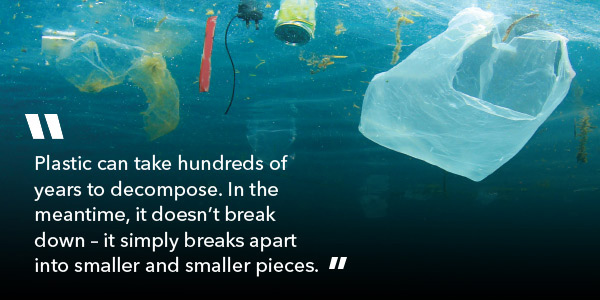
One of the primary challenges with this gyre in particular is its location in the middle of the North Pacific Ocean. And as large as it is – the NOAA estimates it’s as large as the state of Texas – most people have no idea it even exists. Without general awareness and that common knowledge, it’s difficult to get funding to support cleanup efforts from government, industry, or even individual philanthropists.
But there are several organizations working to increase awareness about this issue. For example, the NOAA Marine Debris Program is a nationwide program that addresses marine debris and ocean cleanup.
Their program leads the U.S. government’s efforts to educate and create awareness for the need to make ocean cleanup and plastic pollution prevention a priority. NOAA currently provides grants to nonprofits for plastic education, cleanup, pollution prevention and research projects—such as trash surveys—in the Pacific and along coastal regions across the U.S.
As for cleaning up vast spans of ocean, industry and scientists are working on ways to best make this happen. Some technology that’s been proposed would skim and/or filter the ocean water, to “remove” large plastic debris as well as the tiny plastic particles from the water. The challenge with this particular solution, however, is that it would also remove plankton and other small ocean organisms from the water that are so vital to the world’s marine food chain.
As technology is explored to effectively and efficiently clean up these garbage patches and our world's oceans, we must reduce our society's dependence on plastic. If we don’t address the source, then the problem becomes an exponentially greater one, in search of an ever-more elusive solution. If Captain Moore saw plastic as far as the eye can see, we owe it to ourselves and to future generations to limit the amount of plastic we continue to add to the pile, so that we may ultimately have a finite level of garbage to contend with in the years to come.
>> Learn More: https://marinedebris.noaa.gov/
>> Download full copy of Mission: Water Magazine
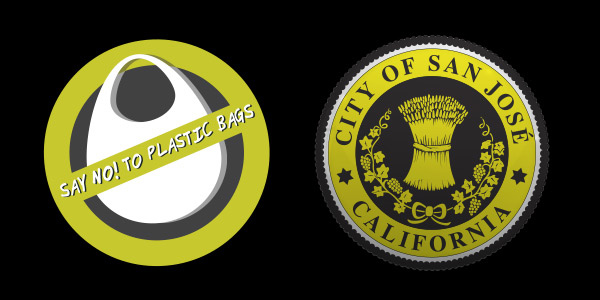
Making a Difference
Plastic has become so commonplace in our society that it’s hard to imagine our world without it. It’s been common knowledge for decades that plastic isn’t biodegradable, but it’s only now that initiatives around the world are attempting to address the challenges with plastic and to reduce the amount of we use.
Towns, cities, and even countries are taking steps to reduce the use of plastic:
- California voters approved a referendum in 2016 to impose a statewide ban on single-use plastic bags
- Long before that vote, according to an article in Scientific American magazine, San Jose, CA banned the use of plastic bags in 2012, resulting in:
- A 59% reduction in plastic litter in their streets
- An 89% reduction in plastic found in storm drains, and 60% in creeks
- A noteworthy increase in consumer use of reusable shopping bags
- France, Italy, and Rwanda are just a few of the countries to also ban plastic bag use, with many others around the world having taken or considering similar steps
>> Gyre Garbage Patch Infographic